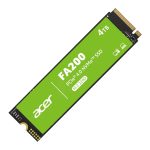
AMD Radeon RX 7700 XT graphics card based on the RDNA 3 “Navi 31” GPU is going to be a high-end gaming solution, ushering in performance levels never before seen in the PC gaming segment, and here’s everything from specs, price, and performance that you need to know.
AMD Radeon RX 7700 XT RDNA 3 Graphics Card: MCM For The Mainstream Gaming Audience
[Updated- 04/09/22]
The AMD Radeon RX 6000 RDNA 2 graphics cards proved that the red team can offer performance on par and even exceed that of the competing GeForce RTX lineup. AMD tried to be competitive in the *700 series segment though the inflation and crypto prices led to some really high prices for a segment that was meant to be a top-seller amongst gamers under the $500 US brand. AMD might want to reignite the same level of competitiveness with its Navi 32 series and the respective GPUs under the RX 7700 banner.

AMD not just delivered a brand new GPU package to its gaming audience but a package that was uplifted with a wide variety of architectural and software innovations such as Infinity Cache tech, FSR, and Smart Access Memory. All of these features combined to give Radeon users a fluid and smooth gaming experience while enjoying all the benefits that modern-day games have to offer such as Ray Tracing, DirectX 12 Ultimate, and visual upscalers technologies.
We should expect similar things with the next-generation flagship too but an important factor to consider is that GPUs are becoming more power-hungry and more pricey. It is a trend that might continue into the future as we get better products but in return, there’s always a cost to pay for end consumers. So starting with what we know so far, first we should take a look at the brand new RDNA 3 GPU core that is expected to debut on the next-gen Radeon RX 7000 series graphics card lineup.
You can also read the expected specs, prices, and performance of other upcoming RDNA 3 GPUs in the posts below:
AMD Navi 32 ‘Wheat Nas’ GPU – MCM At Competitive Prices
While the AMD Navi 31 sits at the top of the spectrum, the Navi 32 GPU will also be another MCM design that’s aimed at the $500 US segment. The AMD RDNA 3 GPUs will be part of the ‘GFX11’ family and the Navi 32 GPU is internally codenamed ‘Wheat Nas’ whereas the RDNA 2, the Navi 22 GPU was internally known as ‘Navy Flounder’. AMD has become quite fond of using fish names as its internal codenames for the gaming GPU lineup and that’s expected to continue with the RDNA 3 lineup.
AMD confirmed that its RDNA 3 GPUs will be coming later this year with a huge performance uplift. The company’s Senior Vice President of Engineering, Radeon Technologies Group, David Wang, said that the next-gen GPUs for Radeon RX 7000 series will offer over 50% performance per watt uplift vs the existing RDNA 2 GPUs. Some of the key features of the RDNA 3 GPUs highlighted by AMD will include:
- 5nm Process Node
- Advanced Chiplet Packaging
- Rearchitected Compute Unit
- Optimized Graphics Pipeline
- Next-Gen AMD Infinity Cache
- >50% Perf/Watt vs RDNA 2

In the information published by AMD, the company highlighted a few key features of its RDNA 3 GPUs that will power the next generation of Radeon RX graphics cards. The RDNA 3 GPU will be based on a 5nm process node and utilize an advanced chiplet packaging that delivers increased performance per watt. Furthermore, the GPU will house a range of new technologies such as a brand new and rearchitected Compute Unit, an optimized graphics pipeline, and the next-gen of Infinity Cache.

AMD will be rearchitecting the compute units within RDNA 3 to deliver enhanced raytracing capabilities. Although there’s no mention of what these capabilities are if we were to guess, we would say it’s definitely talking about performance and a set of advanced features on the RDNA 3 GPU core for Radeon RX 7000 graphics cards.
AMD’s RDNA 2 GPU-powered Radeon RX 6000 series were the first to feature raytracing capabilities on the red camp. They were a generation behind NVIDIA who introduced their first raytracing GPUs two years prior on the Turing graphics architecture and fine-tuned it further to deliver better performance in the second generation on Ampere. With RDNA 3 GPU-powered Radeon RX 7000 pitted for launch later this year, we can expect AMD to offer a similar jump in performance or even exceed Ampere’s ray-tracing capabilities. But the real challenge ahead would be to rival NVIDIA’s 3rd Gen RT (Raytracing) cores which are expected to debut on the Ada Lovelace-powered GeForce RTX 40 series.
Besides raytracing, AMD will also be adding an Optimized Graphics Pipeline for RDNA 3 GPUs will allow for even higher clock speeds than RDNA 2 GPUs. The AMD Radeon RX 6000 cards already run close to 3 GHz so, with an improved 5nm process node, we can expect AMD to breach past the 3 GHz clock limit. This is essential for AMD as their competitor isn’t holding back either with RTX 40 series rumors also hinting at up to 3 GHz clock speeds utilizing the more efficient 4N (optimized 5nm process node).

In addition to these, AMD will also be leveraging advanced GPU capabilities of its RDNA 3 graphics architecture to deliver a richer software ecosystem such as support for AV1 and brand new WMMA Instructions which will allow AI-Learning through the assistance of dedicated hardware blocks. The company is expected to debut its next-gen FSR 3.0 technology with RDNA 3 GPUs which will tackle NVIDIA’s AI-Assisted DLSS feature suite.
The GPUs will also be amongst the first to utilize the brand new PCIe Gen 5.0 protocol, allowing for up to 128 GB/s transfer rates. This will be a crucial step in enhancing the Smart Access Memory feature and also drive the way forward for SAS (Smart Access Storage) which is a brand new feature designed in compliance with Microsoft’s Direct Storage API to deliver faster loading times and better texture streaming in-game. Display capabilities such as DP2.0 and HDMI 2.1 will also be present on the new graphics cards.
AMD RDNA GPU (Generational Comparison) Preliminary:
| GPU Name | Navi 10 | Navi 21 | Navi 31 |
|---|---|---|---|
| GPU Process | 7nm | 7nm | 5nm/6nm |
| GPU Package | Monolithic | Monolithic | MCD (Multi-Chiplet Die) |
| Shader Engines | 2 | 4 | 6 |
| GPU WGPs | 20 | 40 | 48 |
| SPs Per WGP | 128 | 128 | 256 |
| Compute Units (Per Die) | 40 | 80 | 192 |
| Cores (Per Die) | 2560 | 5120 | 12288 |
| Cores (Total) | 2560 | 5120 | 12288 |
| Peak Clock | 1905 MHz | 2250 MHz | ~3000 MHz |
| FP32 Compute | 9.7 | 23 | ~75 |
| Memory Bus | 256-bit | 256-bit | 384-bit |
| Memory Type | GDDR6 | GDDR6 | GDDR6 |
| Memory Capacity | 8 GB | 16 GB | 24 GB |
| Infinity Cache | N/A | 128 MB | 96-192 MB |
| Flagship SKU | Radeon RX 5700 XT | Radeon RX 6900 XTX | Radeon RX 7900 XT |
| TBP | 225W | 330W | 350W |
| Launch | Q3 2019 | Q4 2020 | Q4 2022 |
AMD Radeon RX 7700 XT Graphics Card Specifications
The AMD Navi 32 GPU would be the second chip to feature an MCM design. We have heard that AMD will drop CU (Compute Units) in favor of WGP (Work Group Processors) on its next-gen RDNA 3 GPUs.
Each WGP will house dual CU (Compute Units) but with twice the SIMD32 clusters as opposed to just 2 on each CU within RDNA 2. Rumors are that AMD has the option to select between TSMC & Samsung for the 6nm die. The Radeon RX 7700 XT will be based on the full die configuration.
- AMD Navi 32 (Radeon RX 7700 XT): 7680 Cores, 256-bit Bus, 64 MB Infinity Cache, 200mm2 GPU Die @5nm
- AMD Navi 22 (Radeon RX 6700 XT): 2560 Cores, 192-bit Bus, 96 MB Infinity Cache, 335mm2 GPU Die @7nm
The AMD Navi 32 GPU codenamed “Wheat Nas” is also one of the two MCM GPUs featured in the RDNA 3 lineup. The GPU will feature a single GCD (Graphics Compute Dies) and four MCDs (Multi-Cache Die). The GPU or GCD is said to measure 200mm2 while each MCD will retain the same size at 37.5mm2.

The GCD will be equipped with 3 Shader Engines and each Shader Engine has 6 Shader Arrays (18 in total). The GPU will feature a total of 30 WGP or 60 Compute Units for a total of 7680 cores. This rounds up to >50% more cores than the Navi 31 flagship.
Each MCD should also feature 2 memory connect links (32-bit). That’s a total of 8 32-bit memory controllers for a 256-bit bus interface. Each MCD will retain the 16 MB 0-Hi capacity but there does not seem to be any 1-Hi variant which means that the chip will have just 64 MB maximum configs. That Navi 32 GPU is said to launch in 2023 and will be the highest chip for mobile and mid-tier chip for desktops. The GPU would be first rolled out to the mobile segment and might be announced at CES 2023 which makes ideal sense since we will have Phoenix Range and Dragon Range laptops with Zen 4 cores ready by then.
Now, this is going to result in a higher power draw and AMD seems to have confirmed this much that their next-generation graphics card lineup will feature higher power consumption but they will still be a more efficient option than what NVIDIA has to offer. The AMD Radeon RX 6750 XT already has a TBP of 250W which was a 20W increase over the RX 6700 XT. We expect the 7700 XT to set up around 220-250W TBP figure. The card is expected to retain its dual 8-pin plug input for power and feature an updated dual (reference) or even triple-fan (custom) cooling design.
AMD Radeon RX 7700 XT Graphics Card Performance
As for the performance of these monster GPUs, we can only use theoretical numbers here since the launch is a bit far away but based on what we know from the expected theoretical compute numbers, the performance is going to see over a 2.3x gain over the existing cards. This is a major leap
- AMD Radeon RX 7900 XT: ~75,00 TFLOPs (FP32) (Assuming 3.0 GHz clock)
- AMD Radeon RX 7800 XT: ~64.50 TFLOPs (FP32) (Assuming 3.0 GHz clock)
- AMD Radeon RX 7700 XT: ~46.08 TFLOPs (FP32) (Assuming 3.0 GHz clock)
- AMD Radeon RX 6950 XT: 23.80 TFLOPs (FP32) (2324 MHz Boost Clock)
- AMD Radeon RX 6900 XT: 23.04 TFLOPs (FP32) (2250 MHz Boost clock)
- AMD Radeon RX 6800 XT: 20.74 TFLOPs (FP32) (2250 MHz Boost clock)
- AMD Radeon RX 6800: 16.17 TFLOPs (FP32) (2105 MHz Boost clock)
- AMD Radeon RX 6750 XT: 13.31 TFLOPs (FP32) (2600 MHz Boost clock)
- AMD Radeon RX 6700 XT: 13.21 TFLOPs (FP32) (2581 MHz Boost clock)
- AMD Radeon RX 6700: 11.29 TFLOPs (FP32) (2450 MHz Boost clock)
Based on a theoretical clock speed of 3.0 GHz, you get up to 65 TFLOPs of compute performance and the rumors are suggesting even higher boost clocks. But one should keep in mind that compute performance doesn’t necessarily indicate the overall gaming performance but despite that, it will be a huge upgrade for gaming PCs and a 5.3x increase over the current fastest console, the Xbox Series X.
FP32 Compute Horsepower Comparisons (Higher is Better)
This will be over a 2x compute performance uplift for each graphics card versus its predecessor and this is without even factoring in the brand new architectural features that are expected to bring major lifts too in their respective department. Now FLOPs aren’t necessarily reflective of the graphics or gaming performance but they do provide a metric that can be used for comparison. A 3.25x gain over the RX 6800 XT would be huge for AMD and is definitely going to be required if they are going to tackle the likes of NVIDIA’s Geforce RTX 40 series.

Gamers should expect fluid 4K gaming to be buttery smooth on these graphics cards and with the FidelityFX suite offering next-gen FSR, SAS, and SAM support, we might even see playable 60 FPS at 8K resolution.
AMD Navi 31 GPU SKUs “Preliminary” Specifications:
| Graphics Card | AMD Radeon RX 7900 XT | AMD Radeon RX 7800 XT | AMD Radeon RX 6900 XT | AMD Radeon RX 6800 XT |
|---|---|---|---|---|
| GPU | Navi 31 XTX (RDNA 3) | Navi 31 XT (RDNA 3) | Navi 21 XTX (RDNA 2) | Navi 21 XT (RDNA 2) |
| Process Node | 5nm+6nm | 5nm+6nm | 7nm | 7nm |
| Die Size | ~308mm2 | ~308mm2 | 520mm2 | 520mm2 |
| Transistors | TBD | TBD | 26.8 Billion | 26.8 Billion |
| Compute Units | 48 WGPs | 42 WGPs | 80 | 72 |
| Stream Processors | 12288 | 10752 | 5120 | 4608 |
| TMUs/ROPs | TBD | TBD | 320 / 128 | 288 / 128 |
| Game Clock | TBD | TBD | 2015 MHz | 2015 MHz |
| Boost Clock | ~3000 MHz | ~3000 MHz | 2250 MHz | 2250 MHz |
| FP32 TFLOPs | ~75 TFLOPs | ~65 TFLOPs | 23.04 TFLOPs | 20.74 TFLOPs |
| Memory Size | 24 GB GDDR6 + 96 MB Infinity Cache (+96 MB 3D Stack) | 20 GB GDDR6 + 80 MB Infinity Cache (+80 MB 3D Stack) | 16 GB GDDR6 +128 MB Infinity Cache | 16 GB GDDR6 +128 MB Infinity Cache |
| Memory Bus | 384-bit | 320-bit | 256-bit | 256-bit |
| Memory Clock | 24 Gbps? | 24 Gbps? | 16 Gbps | 16 Gbps |
| Bandwidth | 1152 GB/s | 960 GB/s | 512 GB/s | 512 GB/s |
| TDP | ~350W | ~300W | 300W | 300W |
| Price | ~$999 US | ~$649 US | $999 US | $649 US |
AMD Radeon RX 7700 XT Graphics Card Price & Availability
The AMD Radeon RX 7000 series graphics cards will be focusing on the high-end variants first with the likes of the Navi 31, Navi 32, and Navi 33 GPUs. Previous rumors had mentioned Navi 33 to be followed by Navi 31 and then Navi 32 GPU-based graphics cards but the leaker had earlier pointed out that those plans were no longer applicable. The latest rumors point out to Navi 31 GPUs hitting the store shelves first, later this year. The Navi 32 and Navi 33 GPUs will be aiming a 2023 launch & Navi 33 is mostly mobile-focused so desktop variants might come a bit late after Navi 32 series.
This will be a similar timeframe as the AMD Ryzen 7000 ‘Zen 4’ Desktop CPUs which will also be launching in Fall 2022. Furthermore, NVIDIA is also aiming for a Q4 2022 launch and that’s not all, even Intel is planning a Q4 2022 launch for its very own 13th Gen Raptor Lake CPU family. So in total, we are looking at four major desktop PC launches later this fall which means it’s going to be one heated Q4 this time around but consumers are in for a treat as they will have lots of tech to choose from for their next-gen gaming PC builds.

AMD is highly liked to maintain pricing around the $500 US range for its Navi 32 GPUs. While they are expensive to make due to a 5nm process node and chiplet design on top of that, the Radeon RX *700 series has historically been a sweet-spot positioning for high-end and mainstream gamers.
The post AMD Radeon RX 7700 XT RDNA 3 “Navi 32” Graphics Card Specs, Performance, Price & Availability – Everything We Know So Far by Hassan Mujtaba appeared first on Wccftech.
Powered by WPeMatico







